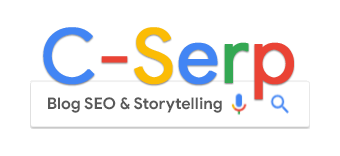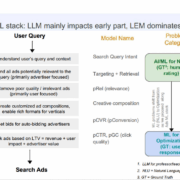How AI shapes Google’s Search Ads rankings revealed in trial exhibit

Artificial intelligence (AI) plays a central role in how Google determines which ads appear in response to a search and how they are ranked.
The company uses a sophisticated machine learning (ML) infrastructure to handle almost every aspect of its Search Ads system — from understanding user queries to ranking ads based on value and engagement.
Here’s what we learned from trial exhibits revealed in the U.S. Department of Justice’s (DOJ) antitrust case against Google.
Two AI pillars: LLMs and LEMs

Google’s system relies primarily on two types of AI models:
- LLMs (Large Language Models) – These are responsible for interpreting user intent and query context. They power the early stages of the ad process, including:
- Understanding user queries (NLU – Natural Language Understanding).
- Identifying relevant ads.
- Estimating ad relevance.
- LEMs (Learning-to-Earn Models) – These models dominate the later stages and are designed for optimization and prediction:
- Predicting click-through rates (pCTR), conversion rates (pCVR), and conversion values.
- Personalizing ad creatives.
- Determining bid values for advertisers using auto-bidding.
How Google ranks ads using AI
The ranking of ads is based on a calculation known as LTV (Lifetime Value), which combines three main factors:
- Revenue potential. What Google and the advertiser stand to earn.
- User impact. How likely the ad is to provide a good experience for the user.
- Advertiser value. The bid and expected return for the advertiser.
Google’s AI models process the following stages to arrive at a final ranking:
- Interpret and retrieve: LLMs first understand the query and retrieve potentially relevant ads.
- Filter: Poor quality or irrelevant ads are filtered out, mainly for user benefit.
- Creative composition: AI customizes ad formats, especially for specific verticals like shopping or travel.
- Bidding: LEMs set bids automatically for advertisers based on predicted outcomes.
- Auction and ranking: Ads are ranked using the LTV metric, heavily influenced by AI-driven predictions.
Why AI matters for Google Ads

Google uses AI to dramatically improve its efficiency and effectiveness:
- Performance uplift: LEMs contribute 85–90% of the incremental long-term revenue per thousand impressions (LT-RPM), making them essential to Google’s advertising success.
- Spam and fraud prevention: AI detects unusual click patterns and prevents fraudulent conversions.
- User experience: By predicting whether users will stay on the landing page (Goodclick), AI helps ensure ads enhance rather than harm the search experience.
- Privacy-safe optimization: Google uses AI to generate anonymized behavioral signals (e.g., “X-MEN” embeddings) to personalize ads while maintaining user privacy.
Ex-Googler comments: We approached ex-Google and Google Ads Coach Jyll Saskin Gales about this document. She clearly saw some new information about how Quality Score is derived:
- “Depending on who you ask, Quality Score is either an immensely important metric or completely irrelevant.
- My interpretation of this doc is that Ad Quality and the user experience is more important than ever.
- While the three components of Quality Score that we are told are not directly mentioned here, the Good Click signal clearly underlies what we know as landing page experience.
- The relevance filter clearly shows how AI now determines relevance and the engagement predictors are clearly spelt out too (pCTR = CTR).”
Conclusion
AI plays a significant role in how Google operates its search ads system. By integrating technologies like Large Language Models (LLMs) and Learning-to-Earn Models (LEMs), Google is able to process large volumes of search queries, identify potentially relevant ads, and rank them based on a range of predictive signals.
These models help improve the relevance of ads shown to users, support automated bidding strategies for advertisers, and streamline decision-making across the advertising pipeline.
While these systems can enhance efficiency and personalization, they also raise broader considerations — such as how ad rankings are determined, how user behavior is modeled, and what level of control advertisers and users have in the process.
As AI continues to evolve, its role in shaping advertising will likely remain a focus of public, regulatory, and industry interest.


